
YES, YOU CAN INNOVATE
INSIGHTS to ACTION
The Six ‘I’s® for Team and Leadership Development

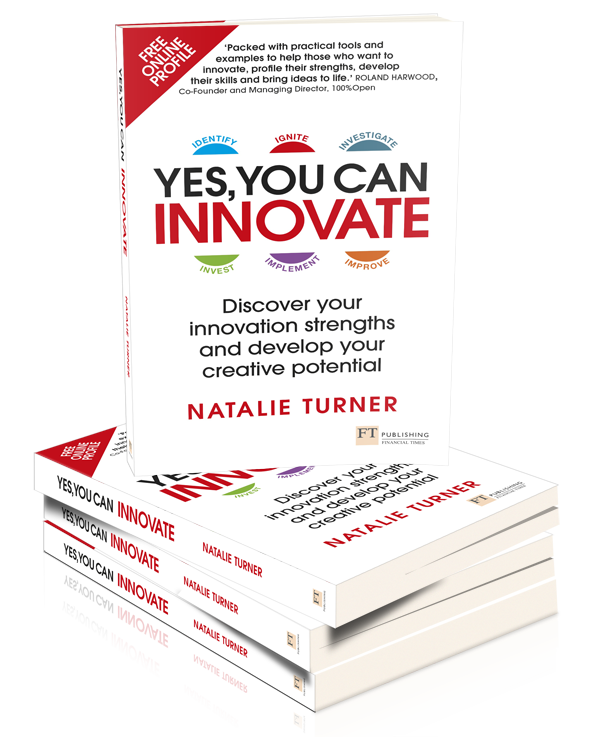
Innovation efforts often fail not because the ideas were not good enough, but due to the lack of the right skills, knowledge, culture, or processes to create innovation impact.
The Six ‘I’s® INSIGHTS to ACTION, for Team and Leadership development, helps organisations who want to innovate more effectively and consistently so that they can have impact with new ideas, both for innovation projects and day to day work.
How can we discover and effectively leverage a team’s innovation strengths?
How can we provide innovation leadership where it is needed most, to ensure we drive results?
WANT TO DEVELOP STRONGER TEAMS THAT CAN INNOVATE TOGETHER?
OUR PROGRAMS
The Six ‘I’s® for
LEADERSHIP DEVELOPMENT
I want to develop stronger
innovation leadership
The Six ‘I’s® for
TEAM DEVELOPMENT
I want to build stronger teams who
can innovate together
THROUGH A HALF DAY VIRTUAL,
HYBRID OR FACE TO FACE WORKSHOP:
-
Learn about an integrated and human-centred approach called the Six ‘I’s® of Innovation
-
Discover the team’s innovation strengths to effectively leverage diversity at the different stages of the innovation journey
-
Explore areas of development; where to build skills internally or seek support externally, to increase the likelihood of making new ideas work
-
Enable leadership teams to gain insight into their own strengths, how they impact the organisation’s ability to innovate, and how to build an innovative culture
OUR CLIENTS INCLUDE

Many companies are increasingly keen to challenge traditional thinking and innovate. But this does not come by itself. The 6 ‘I´s® Innovation Model is a powerful tool to build diverse teams and to monitor the innovation process in a more systematic and circular way. It gives a fresh, non-traditional and holistic view on the innovation process.
Westerberg M.
DIVERSITY MANAGER,
SKANSKA SWEDEN
The Six ‘I’s® for
LEADERSHIP DEVELOPMENT
4 HOURS
This 4 hour Programme is designed for leadership teams who would like to explore what they need to do to create the mindsets, processes and behaviours that contribute to building a culture of innovation.

LEARNING OBJECTIVES
for LEADERS
-
To introduce the team to The Six ‘I’s® of Innovation to help provide a common language and process for innovating
-
To enable a leadership team to appreciate their collective strengths across each of the six stages, and discover how to:
- Leverage each others’ strengths
- Seek support where it is needed most
-
A focused conversation around three concepts critical to supporting a culture of innovation:
- Innovation Leadership
- Innovation Culture
- Open innovation and Collaboration
-
Analyse each leader’s innovation strengths profile; how it manifests in their leadership style and how this impacts the development of innovation culture, systems and processes within the organisation.

KEY BENEFITS
to THE Organisation
-
A shared innovation framework and language about what it means to be innovative in the organisation and how to innovate through The Six ‘I’s® of Innovation
-
Clarity around how a leadership team’s innovation strengths collectively impacts an organisation’s focus around innovation, and its ability to innovate
-
A robust profiling tool that can be used to concretely track innovation skills development. This can be achieved by answering The Six ‘I’s® questionnaire pre and post initiating a leadership development plan.
-
A leader’s individual strengths has a direct impact and influence on the culture of the organisation. This Programme offers each leader, prior to the workshop, a one-to-one debrief with a Six ‘I’s® Full Report. This outlines their innovation skills on 36 dimensions so that they can fully explore their own strengths, potential impact and the value they bring to building and sustaining a culture of innovation.
SESSION OVERVIEW
-
Specially designed for
Leadership teams
-
Duration: 3.5 hours
One 15 min break is recommended
-
Includes
- A Six ‘I’s® Full Report per leader
- A one hour one-to-one debrief
- One Six ‘I’s® Leadership Team Report
- A copy of Yes, You Can Innovate eBook

| Topic | Details |
|---|---|
| Overview of The Six ‘I’s® | How it works at the level of skills, mindsets, processes and culture |
| Innovation Theory | Key definitions and what it means to lead innovation |
| Clarity around PURPOSE of team | Discussion and exploration of the leadership team’s, PURPOSE and goals E.g. Why is innovation important to the organisation? What’s the burning platform? What’s the goal? The role of the leader? |
| Six ‘I’s ® Full Reports | Strengths of each leader, and how these strengths impact innovation efforts, focus and culture |
| Six ‘I’s® Team Profile |
|


Pre-work – Each team member will be invited to answer The Six ‘I’s® of Innovation questionnaire online. This will take 10 minutes to complete. On completion they will receive a copy of a Full Report and have a one-to-one debrief prior to the Session.
The Six ‘I’s® Yes, You Can Innovate Team Session clarifies not only your own, but everyone’s strengths and role in the innovation process. It was enlightening to understand how we can all contribute to help ensure innovation projects will succeed. We see it as a great tool and method to access how to build a great team and make sure that innovation becomes a reality and not just a great idea on paper.
Helena Eliasson
Head of People and Brand People Solutions
Jenny McCarthy
People Insight, Telia Company
The Six ‘I’s® for
TEAM DEVELOPMENT
4 HOURS
This 4 hour Programme is designed for teams who would like leverage individual and collective strengths in order to innovate more effectively and produce more impactful results.

LEARNING OBJECTIVES
for TEAM MEMBERS
-
To introduce the team to The Six ‘I’s® of Innovation to help provide a common language and process for innovating
-
Explore the strengths and challenges of individual team members’ profiles
-
To enable the team to appreciate their collective strengths across each of the six stages, and consciously be able to:
- Acknowledge and leverage each others’ strengths
- Seek support where it is needed most
-
To drill down into specific skills that the team can develop to get better at making new ideas happen
-
High level action planning
- Agree on team roles (who might be best suited to lead each stage)
- Discuss individual skills development plan.

KEY BENEFITS
to THE Organisation
-
A shared innovation framework for use on future projects that will provide a bedrock for innovation culture building
-
A Six ‘I’s® Team Profile that can be used as a diagnostic tool to:
- Consciously leverage team strengths
- Offer targeted guidance and support where and when it is most needed
-
A robust profiling tool that can be used to concretely track innovation skills development
-
An individual and team level awareness of innovation skills and how to best deploy them
-
A confidence indicator around everyone's value and contribution to helping make innovation work.
SESSION OVERVIEW
-
Specially designed for
Project Teams
Existing functional teams
Cross-functional teams
Innovation teams -
Duration: 3.5 hours
One 15 min break is recommended
-
Includes
- A Six ‘I’s® Standard Report per participant
- One Six ‘I’s® Team Report
- A copy of Yes, You Can Innovate eBook

| Topic | Details |
|---|---|
| Overview of The Six ‘I’s® | How it works at the level of skills, mindsets, processes and culture |
| Innovation Theory | Key definitions and what it means to innovate in the context of the team |
| Clarity around PURPOSE of team | Discussion and exploration of team needs, PURPOSE and goals E.g. Why has the team been formed? What does the team want to achieve? |
| Six ‘I’s ® Individual Standard Report | Strengths of each member and how it might influence and impact innovation efforts, and project work |
| Six ‘I’s® Team Report |
|


Pre-work – Each team member will be invited to answer The Six ‘I’s® of Innovation questionnaire online. This will take 10 minutes to complete. On completion they will receive a copy of a Standard Report, which they will need to read prior to the workshop.
Having just launched a company, doing a Six ‘I’s® Team workshop was the first time we had sat down since going live together. We went through our individual reports and then a group report. We saw and realised things we hadn’t known before about ourselves and the group/company. The Six ‘I’s® Team were great to work with, helping us work things out by ourselves, being there to bounce ideas off and offering suggestions throughout. Brilliant, would definitely recommend!
Lee C.
CO-FOUNDER,
BORROW MY GARDEN LTD
Exclusive
Each participant will receive a copy of Natalie Turner’s Award-winning book (in eBook format) Yes, You Can Innovate, based on the Six ‘I’s® of innovation. It is packed full of practical ideas, tips, and tools on how to build innovation skills and mindsets. Participants can use it, post the Programme, as a reference guide to help them embed learning, continue to upskill their innovation strengths, and improve their ability to create value out of new ideas.
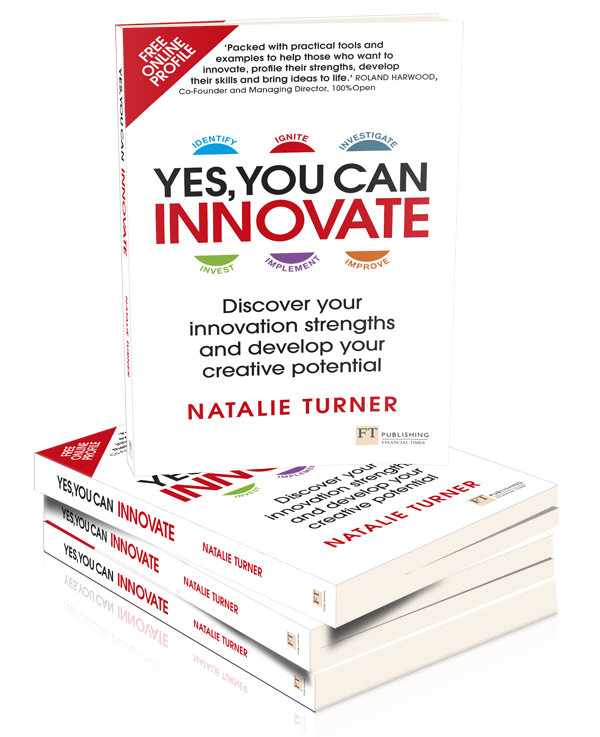
Central to all our Programmes is The Six ‘I’s® of Innovation
The Six ‘I’s® is a comprehensive, integrated methodology that combines design thinking with organisational and team development.
Owned by The Entheo Network, and created by innovation specialist Natalie Turner, The Six ‘I’s® offers a human-centred approach to innovation, blending design thinking with organisational development, and a unique proprietary innovation strengths profile for individuals and teams. Its purpose is to give individuals and organisations a consistent framework for measuring innovation skills and capabilities, and an actionable process for developing an innovative and productive working culture.
Statistically reliable, The Six ‘I’s® Profiling Tools were developed in partnership with industry experts and leading thinkers from the areas of innovation and organisational development and have been used in a variety of organisations across the world including the Singapore Government, Cisco Systems, LEO Pharma Asia, GSK and Danone.
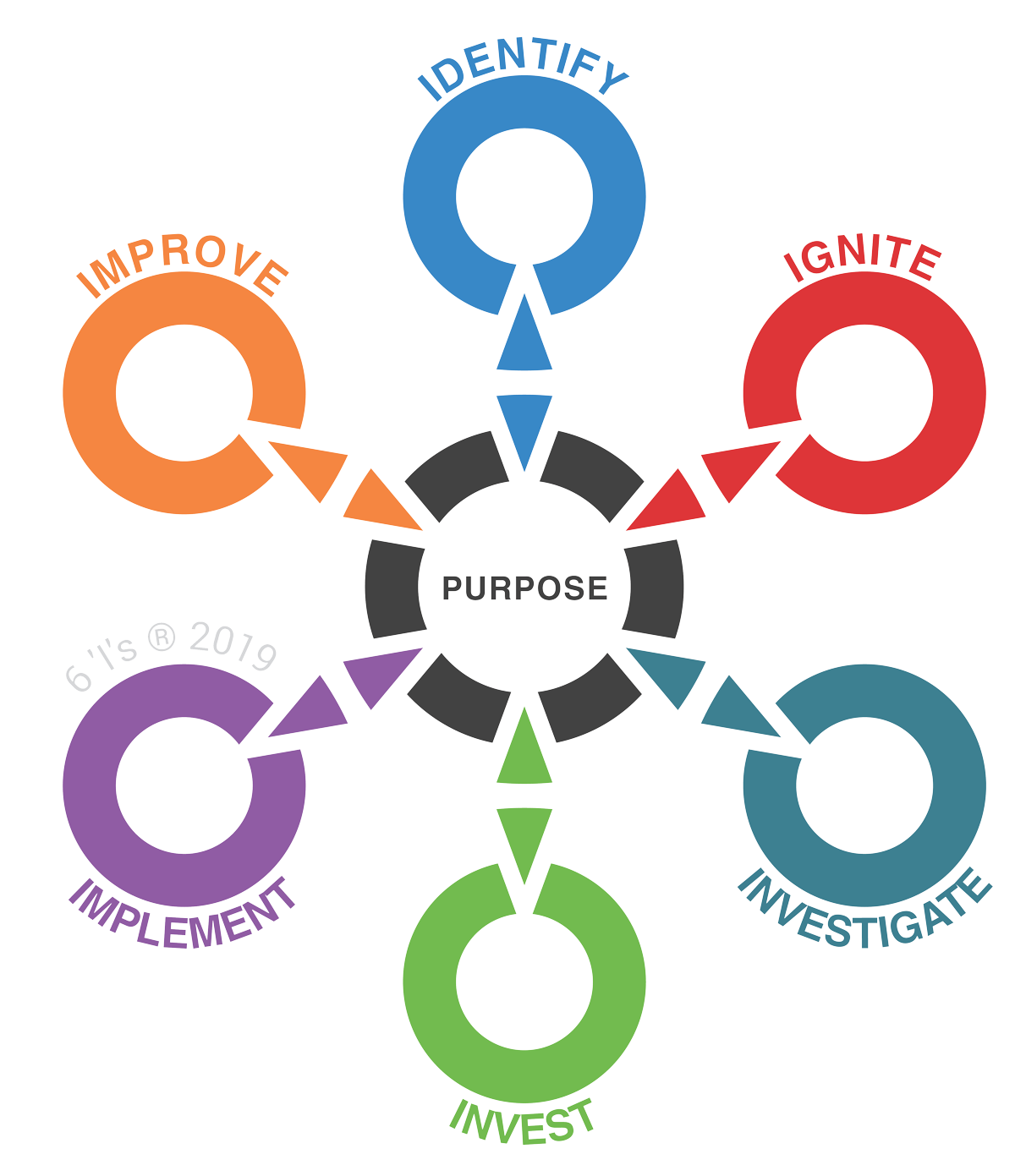
THE SIX ‘I’s® OF INNOVATION
WHAT IS IT AND WHAT MAKES IT UNIQUE?
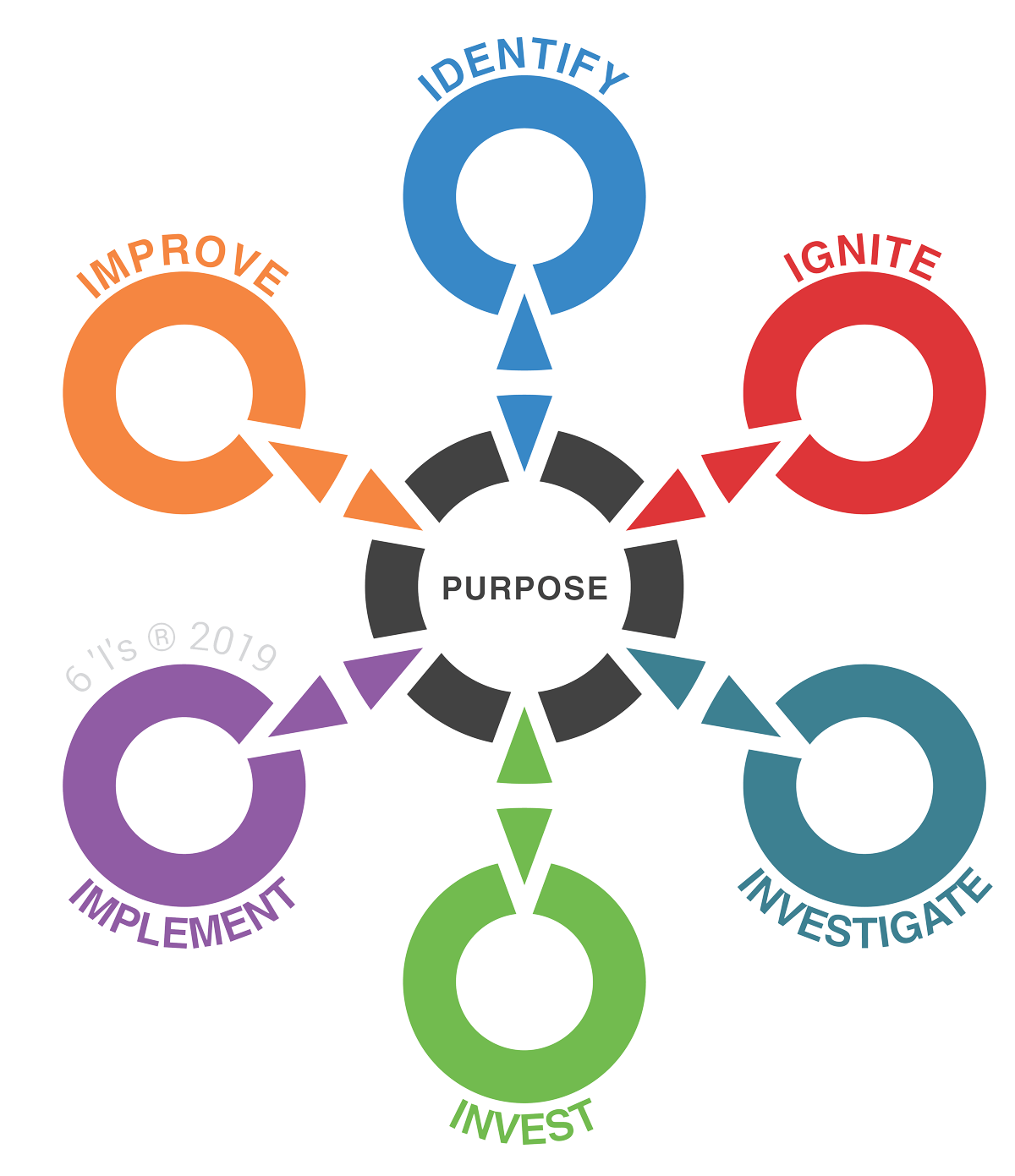
#1 AGILE (Non-Linear) Journey
Innovation journeys are commonly represented by an assumption that innovation starts at the same place, ‘the beginning’. The Six ‘I’s® provides a trailblazing perspective on this, by representing the journey as an inter-connected whole. In reality, innovation efforts can start at any stage, cycle back into PURPOSE, cycle back out, moving backwards and forwards at any time; to eventual value creation.
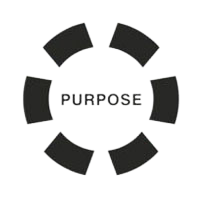
#2 PURPOSE at the Centre
Many processes and models suggest jumping into a challenge (the ‘WHAT’). The Six ‘I’s® breaks the mould by starting at the heart of a challenge …with an exploration of the WHY? The Six ‘I’s® is an innovation MODEL for the 4th Industrial Revolution that encourages sustainability and PURPOSE at its core.
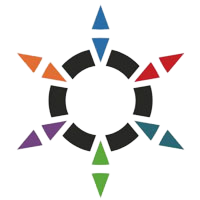
#3 More than just a robust PROCESS
Many innovation models focus only on the process and miss out the equally important component of building systems and policies to support innovation efforts. The two triangles that link PURPOSE to the six stages, symbolise this connection, as innovation efforts often fall apart if they don’t take into consideration culture and ways of working.
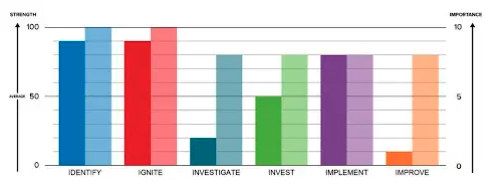
#4 PROFILING TOOLS - Leveraging
Strengths, Building Capabilities
Most innovation efforts are focused on addressing a challenge or seizing an opportunity. Sometimes, innovation efforts fail because the individual or team does not possess the requisite skillset to make an idea work. The Six ‘I’s® profiling tools allow organisations to discover individual and team collective strengths, which enable targeted interventions to leverage strengths and provide support where needed.

#5 MINDSETS for Innovation
The Six ‘I’s ® is the world’s only Model which incorporates the various mindsets required to innovate. This is a radical breakaway from the idea that a separate, singular mindset is required.

#6 FLEXIBLE ARCHITECTURE
Adopting The Six ‘I’s® does not require a rejection of other systems and approaches. It is a flexible architecture that seamlessly incorporates other tools, methodologies, and ways of working e.g., lean, agile, sprints, design thinking, stage gates, business model canvas, lateral thinking, pitching, and so on….
THE SIX ‘I’s® PROFILING TOOL
DISCOVER, LEVERAGE & BUILD INNOVATION CAPABILITIES
The Six ‘I’s® incorporates a proprietary Innovation strengths profiling tool that enables individuals and teams to understand their innovation-related strengths and areas of development; so they can play to their strengths and improve their ability to innovate at work.

Individual strengths (darker bars) and Importance Levels (lighter coloured bars)
The results show a gap analysis between current and desired skill levels. This enables an individual to know where they will need support in helping an idea move into action
Key Benefits of the Individual Profile
For Individuals
Enables individuals to be aware of their strengths and areas of development. This allows individuals to know how they can contribute their strengths and get support when needed. For example, an individual that is strong on IMPLEMENT might never have considered themselves as an innovator. However, without focus and skills around implementation, ideas remain just ‘good ideas’.
For Leaders
A leader’s innovation profile will influence the way innovation projects are supported in the organisation. Awareness of this will help the leader to understand their own style so that they can support all stages of the innovation journey. For example, if a leader is high on IDENTIFY or IGNITE, they may focus on these areas, to the detriment of others, such as the ability to IMPLEMENT new ideas.

Team Strengths “At a Glance”
This grid highlights the range of strengths that individual team members exhibit. This gives, at a glance, the diversity of the team’s collective skillset

Team Scores focused on Leadership and Culture Attributes
Team profiling also offers a ‘heat map’ overview on three additional concepts which are important for leaders to manage in building a culture of innovation
Key Benefits of the TEAM Profile
For TEAMS MEMBERS
Awareness of the team’s collective strength and areas of development can allow them to be aware of their strengths and where other skills might be needed to make an idea work. For example, if a team is collectively high on INVESTIGATE, they are more likely to be over-analysing ideas, without moving them forward into INVEST or IMPLEMENTATION.
For Leaders /
THE ORGANISATION
If leadership team members results are collectively compiled, they will discover how strong they are across each ‘I’ with regards to leadership, culture building and open innovation and collaboration. Leaders can focus on where they need to build systems, processes and culture at the various stages of The Six ‘I’s® to help embed innovation as a core competence.
THE SIX ‘I’s® TEAM REPORT
EXAMPLE SCENARIO & ANALYSIS
Scenario 1: An intact team is about to embark on a project to enhance the service they currently provide to retail customers. This is their consolidated team profile…

PRELIMINARY ANALYSIS TO BE SHARED WITH TEAM
-
Collectively, the team displays a strength in the earlier stages in the innovation journey. That being said, they may require a little support from a leader to focus their energies in the right direction (IDENTIFYING the right innovation challenge that will align with strategic objectives).
-
The team will probably not have any difficulty in coming up with ideas, and then proceeding to analyse them. A cautionary note here is that as their strength in IGNITE is more than what the project might need, they might get stuck in this stage and not be able to move on.
PRELIMINARY ANALYSIS TO BE SHARED WITH TEAM
-
The team does not appear to have a strength in INVEST and IMPLEMENT. However, their importance scores (84%) appears to demonstrate a strong desire to get better at IMPLEMENTING projects and solutions. Who can the team look to for support, especially these stages? Can it be found internally? If not, what external resources need to be brought in to support the team?
-
How can the team manage the potential pitfall of ‘analysis paralysis’ as they have a collective strength in IGNITING ideas, and INVESTIGATING them?
POSSIBLE ACTIONS EMERGING AFTER THE SESSION
-
A leader looking at a team with this team profile could provide strategic focus at the start of the project, so that the team can focus their energies effectively
-
The leader could also find someone in the organisation to mentor them on how to pitch ideas, (INVEST) and how to present a business case to IMPLEMENT the solution.
THE SIX ‘I’s® TEAM REPORT
EXAMPLE SCENARIO & ANALYSIS
Scenario 2: The leader of an insurance firm has articulated two needs: (i) To develop a pipeline of new ideas in two categories: business of today, and ‘disruptive’ business; and (ii) To put together a plan for how to encourage more innovative behaviour across the core business (day-to-day innovation). This is their consolidated Innovation and Culture Heat Map results…

PRELIMINARY ANALYSIS TO BE SHARED WITH TEAM
-
Innovation leadership: It appears that the leaders understand the importance of providing direction to their teams, but, looking across the six stages, these skills do not appear to be their top strengths. Especially at the IDENTIFY stage, this is a significant area to review in order to provide strategic focus for organisation-wide innovation efforts.
ADDITIONAL AREAS THAT CAN BE EXPLORED
-
Innovation Culture: Creating a culture where people feel free to contribute their ideas – The gap is significant with only 27% leaders reflecting that they are strong at this skill, and 90% saying it is important. Hence, this culture attribute reflects ‘red’ in the heatmap. What could be done to address this?
-
Open innovation and collaboration: There appears to be a collective strength around involving others and bring others into the ecosystem. How can these connections be leveraged to build a pipeline in the ‘business of today’, as well as more disruptive business model ideas? Who in the organisation could lead these efforts?
POSSIBLE ACTIONS EMERGING AFTER THE SESSION
-
The leadership team appears to have a strength in IMPLEMENT and IMPROVE but not in IGNITING of ideas. They may need to reflect and discuss how to develop a culture that consistently encourages and supports their people to address day-to-day challenges, whilst also think beyond them
-
INVESTIGATE and INVEST: If the organisation can develop its ability to assess new ideas and as well as skills around investment evaluation criteria (for both day-to-day and disruptive ideas), they would be able to further support the pipeline of ideas.
What are the Six ‘I’s®?
WATCH THE VIDEOS BELOW AND DISCOVER THE Six ‘I’s®
-
As an IDENTIFIER, my team and I questioned our own mindset towards what we were doing and uncovered an opportunity to try something new. Through applying the 6 'I's®, we grew our market share from 1% to 15%.


THE IDENTIFIER PROFILE
- Innovation Role – Providing vision, direction and a sense of new possibilities
- Mindset – Curiosity
IDENTIFIER’S Strengths:
-
Visualising and imagining the future
-
Making sense of trends and patterns and thinking about what they might mean for opening fresh opportunities
-
Being forward thinking, strategic and noticing and seeing things that other people don’t
-
Being curious and having lots of different interests and a huge appetite for learning
-
Having a positive outlook on life and seeing opportunities where others see problems
-
Outward looking and interested in the world around them
-
They often seek to add new people, whom they believe will bring new thinking, to their networks.

The swirling image illustrates the mindset of Curiosity. It is open-ended, dynamic, explorative and able to generate momentum.
IDENTIFIER’S CHALLENGES:
As with all strengths, particularly if they are overdone, there can be challenges.
-
As IDENTIFIERS are usually big-picture thinkers, they can often miss the detail
-
Future-orientated, they can lose focus on the present day
-
They can get easily bored if not stimulated by new things, new ideas and new ways of thinking
-
If intellectually driven, they can sometimes be too abstract or conceptual in how they explain things to other people.
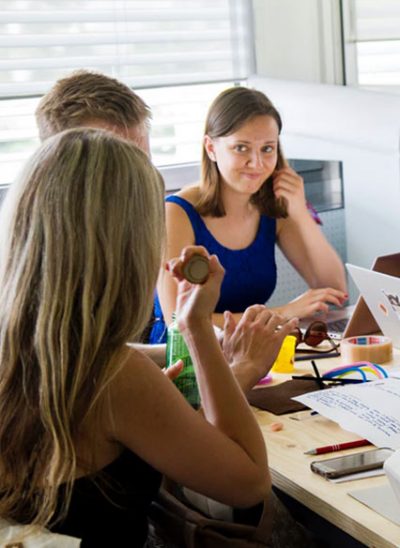
-
As an IGNITER, I generate new ideas… create a team environment for others and... manage the tension between delivering what the business need today, and what it will need tomorrow.

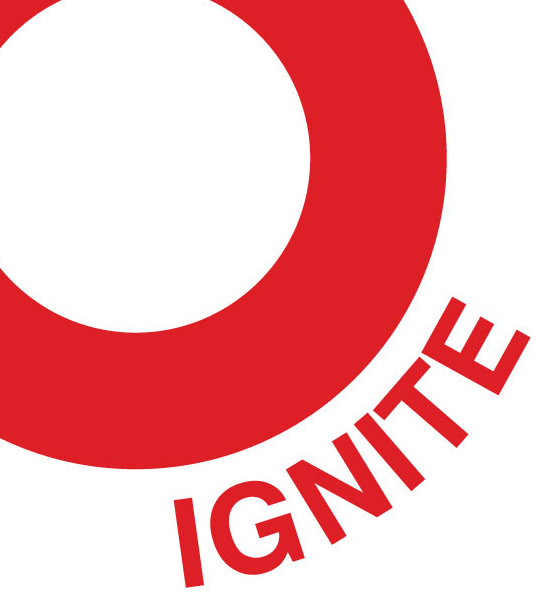
THE IGNITER PROFILE
-
Innovation Role – Providing novelty, freshness and energy for new ideas and a sense of new possibilities
-
Mindset – Creativity
IGNITER'S Strengths:
-
The first to come up with new ideas
-
Good at seeking new knowledge outside their current areas of interest
-
Not afraid of challenging their own thinking as well as that of other people
-
Original thinkers
-
Can see connections between different and unrelated ideas
-
Good at creating a culture where people feel free to contribute their ideas
-
Skilled at motivating and inspiring others.
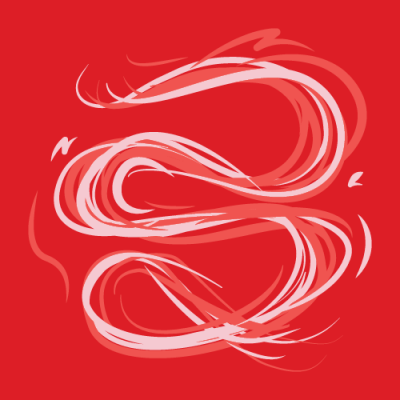
The swirling image illustrates the mindset of Creativity. The swirl moves backwards and forwards. It is open ended and explorative.
IGNITER’S CHALLENGES:
IGNITERS love to come up with new ideas. Lots of them. But, as with all strengths, there can be challenges:
-
They can become distracted with too many ideas that take them into multiple directions. This can dilute their energy and effectiveness
-
They can get attached to their own ideas and not think through whether they are feasible
-
They can enjoy jumping into action and implementation too quickly
-
They can generate lots of ideas and not see them through into fruition.

-
As an INVESTIGATOR, I listen and take the time to hear the needs of different people. The more you can do this, the more you learn to put aside your own assumptions so you can understand whether an idea will work.
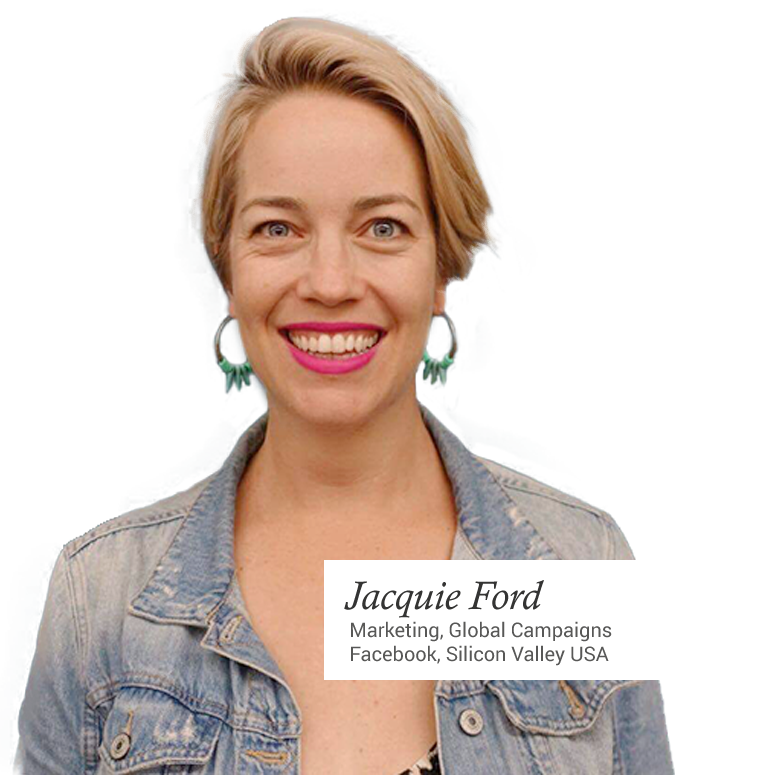
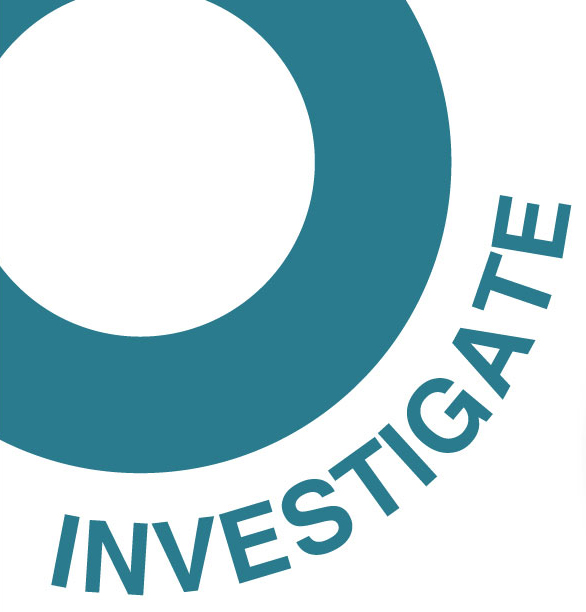
THE INVESTIGATOR PROFILE
-
Innovation Role – Providing analytical thinking and objectivity
-
Mindset – Critical
INVESTIGATOR'S Strengths:
-
Systematically researching, analysing and assessing ideas
-
Making sure ideas are useful, not just novel
-
Understanding the importance of testing and validating ideas before moving into implementation
-
Being willing to test their thinking with customers and stakeholders
-
Creating a culture where exploration and questioning is encouraged
-
Encouraging other people to think things through carefully and systematically.

The image illustrates the mindset of Investigate, Critical. The swirls, whilst still exploratory, start to converge and be more analytical in approach.
INVESTIGATOR’S CHALLENGES:
Being analytical is one of the strengths of an INVESTIGATOR, but sometimes their strengths can backfire.
-
They may continually search for more validation before they are willing to make a commitment. This can lead to a new initiative getting immobilized or stuck
-
They can get lost in the detail and lose sight of the bigger picture; why they are innovating and the overall PURPOSE
-
They can be dismissive of ideas if they don’t think they are feasible, being too quick to judge something that is untried or tested.

-
As an INVESTOR, I am always evaluating the potential return (RoI) against the risk involved. I look critically at the key assumptions that support a given business-case, take off 50% and evaluate if it still makes sense.
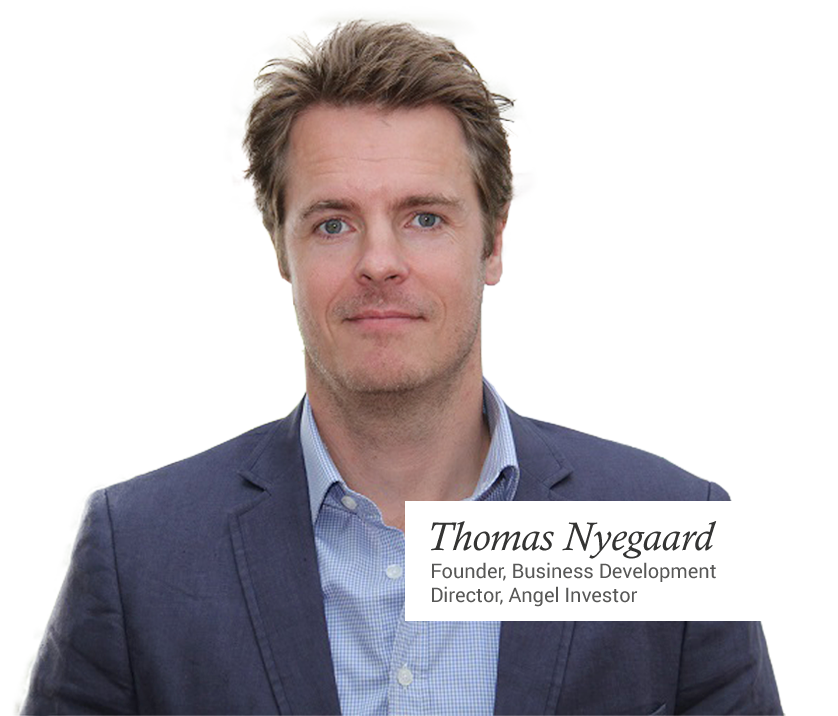
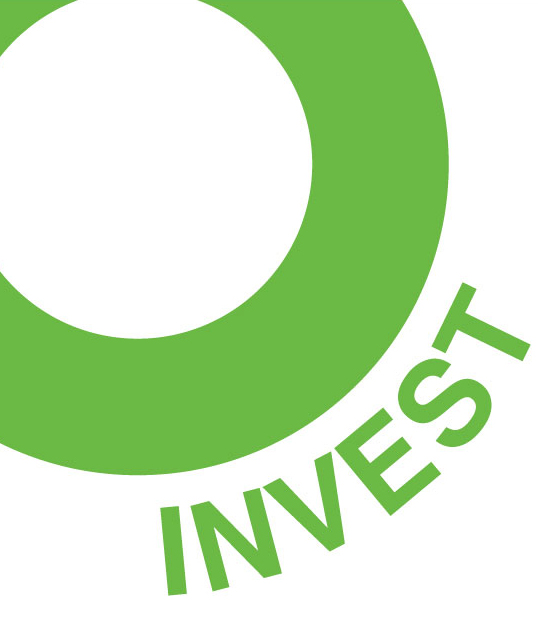
THE INVESTOR PROFILE
-
Innovation Role – Providing pragmatism, decision making and influence
-
Mindset – Courage
INVESTOR'S Strengths:
-
Being good at taking into account complex information and being able to make decisions
-
Understanding whether a business model might work
-
Being able to keep cool and make decisions despite difficulties
-
Can sense where and when resources should be provided
-
Influencing other organisations and people to create partnerships
-
Having the courage to take a risk.

The image represents the mindset of Courage. Swirling inwards to make a decision to act, to move forward, to go ahead.
INVESTOR’S CHALLENGES:
INVESTORS need a good combination of logical and pragmatic thinking, with a willingness to follow their hunches and take a risk. These are often difficult skills to combine. Some barriers can include:
-
The need to ask for information that might be hard to quantify, which can slow down decision making
-
Not allocating separate funds outside normal day-to-day business requirements
-
Having too many conflicting demands on limited resources
-
Failing to help others grow in their ability to influence and becoming a ‘bottle neck’ in making things happen.

-
As an IMPLEMENTER, I am able to break a vision down into sizeable chunks and prioritise what needs to be done, so that we can build something that will be sustainable.

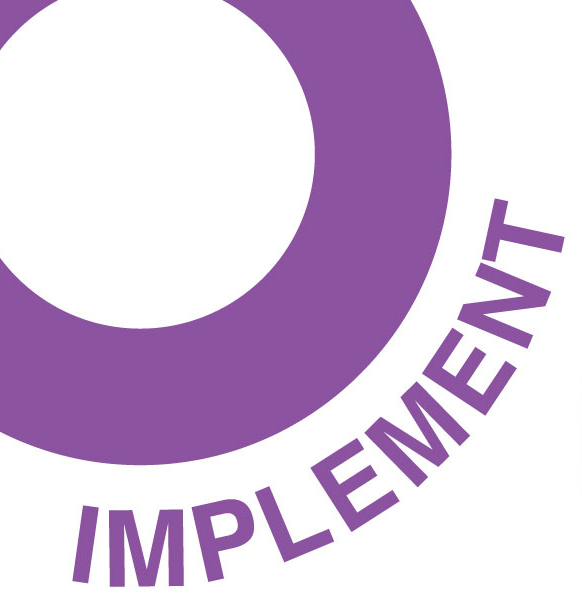
THE IMPLEMENTER PROFILE
-
Innovation Role – Providing management, focus and discipline
-
Mindset – Commitment
IMPLEMENTER'S Strengths:
-
Being good at planning and organising
-
Making things happen
-
Managing risks
-
Motivating others to achieve results
-
Building alliances and partnerships
-
Allocating and managing resources
-
Building and managing strong teams.

The image represents the mindset of Commitment. The swirls start to form a shape, they converge in on themselves to direct energy into focused activity.
IMPLEMENTER’S CHALLENGES:
IMPLEMENTERS like to get things done, and tend to be practical and focused, and action orientated but they can:
-
Sometimes jump into action too quickly
-
Not allow time for investigating the feasibility of an idea
-
Lose sight of the innovative aspect of what they are trying to achieve
-
Get caught up in operational issues and lose sight of the bigger picture.

-
I am an IMPROVER. I work well with what already exists rather than coming up with new ideas. Improving on what exists can create more value quickly.
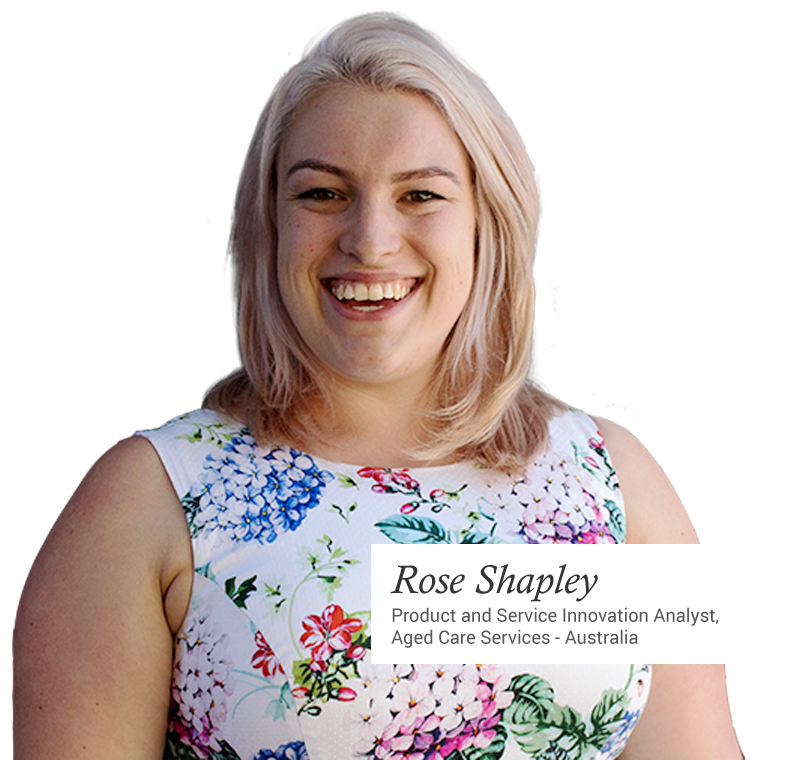
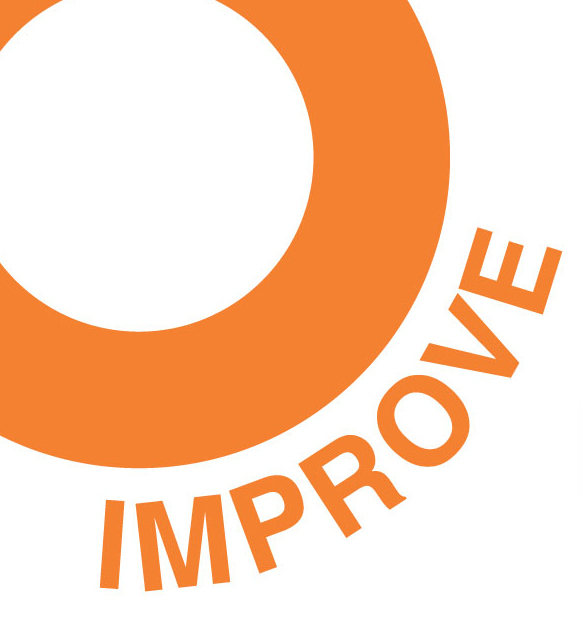
THE IMPROVER PROFILE
-
Innovation Role – Providing fresh perspectives, the ability to optimise and learn
-
Mindset – Clever
IMPROVER'S Strengths:
-
Being good at generating many ways to make an idea better
-
Being open to gathering feedback from customers, people, or stakeholders
-
Reviewing and assessing what has worked and why or why not?
-
Capturing learning
-
Learning from failure
-
Scaling an idea into other areas of opportunity.

The image represents the mindset of being Clever. The swirl starts to open up on itself again to start seeking and exploring how it can do something better.
IMPROVER’S CHALLENGES:
As IMPROVERS largely work with what is, rather than what could exist, they may:
-
Find it difficult to imagine completely new possibilities, and may need the support of an IGNITER
-
Rely on continuous improvement
-
Miss opportunities for more radical ideas
-
Be fearful of moving too far away from the knowledge of what they think will work

CORE TEAM

Natalie Turner
FOUNDER, CEO
Natalie is the Founder and CEO of The Entheo Network, and has worked for and consulted with some of the world’s leading organisations including DBS, LEO Pharma Asia, Kellogg’s, Singapore Airlines and CISCO Systems, helping them build innovation systems, culture and capabilities as well as generating new ideas to help them grow their teams and businesses. Natalie is also an international speaker on innovation, entrepreneurship and leadership and an experienced business facilitator, consultant and innovation coach. Watch Natalie speak on the subject of PURPOSE in the age of digital disruption at the Asia Professional Speaker’s Convention.
Natalie is the inventor of The Six ‘I’s® an innovation methodology and assessment tool that helps individuals and organisations measure their innovation strengths and provides a clear step by step guide to make innovation practical and effective. She is also the Author of Yes, You Can Innovate. Discover your innovation strengths and develop your creative potential and contributing author to Unleash Your Voice. Powerful Public Speaking for Everywoman.
Natalie has three degrees; a BA Hons in Politics & Legislative studies, an MSc in Economics and Social Psychology and an MBA. She is a Master Practitioner in Group Dynamics and Non-Verbal Communication and a Certified Integrative Enneagram Coach. Natalie is a UK National who lives in Malaysia, works in Singapore, across Asia and in Europe.
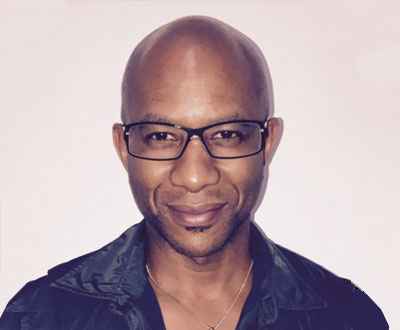
Carl Hinds
CO-FOUNDER
Co-Founder of The Entheo Network, Carl has over thirty years’ experience working in the arts and creative industries in a variety of financial management roles. Focused on developing a strong platform for sustainable growth, Carl is a specialist in creating and maintaining financial management, operations and IT systems. Prior to setting up The Entheo Network, he was engaged as a management and project accountant for the Barbican Arts Centre in London. He also acted as a financial consultant for the UK Government within the educational sector. Carl has been instrumental, in partnership with our IT specialists, in creating and managing the development of the Six ‘I’s® profile management and reporting system. He is also responsible for the commercial aspects of the organisation as it grows internationally. Beyond his specialism in working with entrepreneurial ventures, he is a professional in-person and virtual DJ and has performed at numerous venues across Europe and South East Asia as well as streaming live through with his weekly uplifting soul and funk show Sunday Soul Sessions.

Hany Chee
MARKETING & CLIENT SUPPORT
An ex Singapore Girl, with almost 20 years of cabin crew experience for Singapore Airlines, Hany excels at customer service and working with people from different cultures and backgrounds. As well as supporting the operational backbone of the company, Hany provides administrative assistance to our growing network of Certified Six ‘I’s® Practitioners around the world and digital marketing communications support for growing the Six ‘I’s® brand. Hany has a Diploma in Marketing and Public Relations from the University of Oxford.

Dr, Bettina Von Stamm
ACEDEMIC ADVISOR - GERMANY
Dr Bettina von Stamm was the first Certified Practitioner of the Six ‘I’s® of Innovation and deeply believes in the Model as it combines process and mindset and nurtures an understanding that everyone, whatever their skill or ways of thinking, has a role to play in the innovation journey from idea to implementation and improvement. Another reason she loves the Model is that it has PURPOSE at its centre. In these times of unprecedented challenges, it becomes ever more critical that innovation is purpose driven, ideally to pave the path towards sustainability and regeneration.
Bettina has been a visionary thinker and doer in the field of innovation for well over 25 years. Whether running leadership seminars and workshops or speaking at conferences, as well as coaching, mentoring or teaching MBAs and executives, Bettina brings her contagious positive energy to inspire and open minds. She enables both individuals and teams to think differently about being creative, and how to apply creativity to their business. She also enables highly diverse teams to work joyfully with each other. Both these areas are all the more important in this ever volatile world where sustainability and regeneration are key. Her credibility arises from an approach that combines deep insights with latest findings from scientific and social science research. Her passion for, and knowledge of her work, make her fun and engaging to work with.
Six ‘I’s® Certified Practitioners
ASIA:

Brigitte Zeller
SINGAPORE
Brigitte has 25+ years’ experience in the international Food and Beverage industry gained through local, regional and global positions as a Director in brand & marketing, insight, innovation, category and business development. Organisations that she has worked with include; Nestle Greater China, Unilever China and Asia, Danone France, Danone Nestle JV Czech Republic, Danone APAC and Fonterra Global Consumer brands in New Zealand.
She loves to create value within emerging and disruptive categories, having broad expertise of how to identify strategic opportunities to craft differentiated brands. Her insights have helped to shape value propositions in diverse food categories including ready-to eat meals, healthy snacking, life style and plant based beverages, and functional dairy in Baby and Healthy Aging. She is the Founder of Start’In for Good in Singapore designed to positively impact organisations within food transformation. Brigitte has a MBA from the Schulich School of Business (York University Canada) and EM Lyon Business School (France).

Joyce Jenkins
SINGAPORE
Joyce is a leadership development facilitator, coach and consultant with extensive international business and management experience in leveraging diversity in the field of intercultural management. She has coached and facilitated programmes for senior leaders and teams in some of the world’s leading businesses and organisations including, as an adjunct faculty member, at the Center for Creative Leadership (CCL) Asia-Pacific. She has also worked as a Research Associate at INSEAD in Singapore and in France and is a member of the Asia Pacific and European Alliance of Leadership Facilitators and Global Executive Coaches. She is a Fellow of the RSA. Joyce has a MA in Chinese and Japanese studies and in Intercultural Communication, which she also teaches at the University of Warwick, UK. Joyce chairs the boards of both SIETAR (Society for Intercultural Education Training and Research) Global and in Southeast Asia.

Cathy Johnson
SINGAPORE
Cathy is a facilitator, coach and speaker who works with multinationals across Asia to develop leaders and support change. She has 28 years of international corporate experience which brings a depth of understanding around the challenges faced by leaders in the complex world of organisations. As an experienced facilitator, Cathy is passionate about supporting conversations to address organisational goals while simultaneously managing group process to foster individual growth and understanding. She creates a very interactive space and uses humour and wisdom to motivate interest and learning. Her areas of focus include innovation and change, executive presence, challenging conversations, compelling presentations and assertiveness. Her last corporate role was Head of Marketing of a NASDAQ-listed business-to-business media company. Cathy holds an MBA from the Keenan-Flagler Business School of UNC Chapel Hill, and is a Professional Certified Coach (International Coach Federation, New Ventures West.). Cathy has lived in Singapore for 23 years.

Senela Jayasuriya
SRI LANKA
Passionate about helping organizations and individuals with high-performance for a higher-purpose, Senela is an Award-Winning international keynote speaker and Certified Transformation Coach. As an expert trainer in corporate and business, Senela specialises in growth acceleration and goal-setting, innovative leadership, change management and diversity, equity and inclusion. She is also the Founder & CEO of Women Empowered Global, a Board Member of McQuire Rens Global and a speaker and member of the International Society of Professional Innovation Management (ISPIM). Senela has conducted Leadership masterclasses, executive coaching and start up mentoring programs for professionals spanning 20 countries. Her key areas of expertise include; leadership acceleration, building innovative teams, start-ups, strategic alliances, inclusive work cultures and organisational development.

David Thomas
HONG-KONG
David is an Australian, who has lived in Asia for 20+ years, including China, Singapore and Hong Kong. His 35 years’ experience in commercial operations, manufacturing, services management, and business Improvement, include 12 years serving in Asian regional senior leadership roles for Compaq, Hewlett-Packard and Philips Electronics. He brings deep expertise in business dynamics and regional cultural diversity in driving innovation and change. Since 2013, he has coached and facilitated innovation and business improvement at enterprises large and small across a broad range of industry sectors such as: healthcare and allied services, supply chain, consumer distribution and retail (including e-commerce), manufacturing and export industries (including electronics and automotive), banking and finance, hospitality and many others. His Certifications include; HP Sigma + Business Improvement (Black Belt), Executive & Business Coach, Cultural Consultant, Personality assessments (SDI, Harrison), Emotional Intelligence Coach.

Edmund Seow
CAMBODIA
Edmund Seow is a trainer and facilitator with over 11 years of experience transforming organisations around Asia. He is currently based in Cambodia, and helps to support The Capacity Specialists, a boutique learning and development service provider that focuses on creating value and tangible results for their clients in all areas of their organisation. Edmund’s open and engaging facilitation style is highly experiential. He has implemented people improvement and innovation solutions for SMEs and MNCs like AVIVA in Singapore and RMA, Smart, and AMK in Cambodia. His work in DBS Bank, Singapore as an internal consultant to implement service culture change, impacted over 900 staff in 83 functional teams. The work of his team helped the bank secure Singapore’s Innovation class Certification and Awards for Best in-house contact centre, Best customer service delivered, and Best Bank Award in Singapore from Finance Asia for 2013.
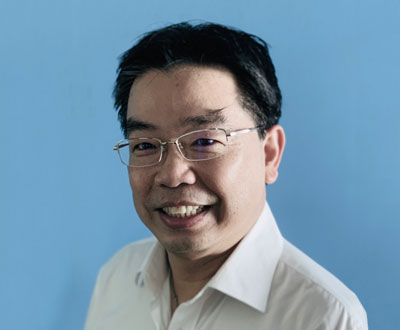
Dr. Khoh Soo Beng
MALAYSIA
Dr Khoh Soo Beng is Malaysia’s first Six ‘I’s® Certified Practitioner. He is an innovation consultant, trainer, and coach with >28 years of experience in R&D, manufacturing, supply chain, IT, 6-Sigma, software engineering, project management, knowledge and innovation management in Fortune 500 MNCs.
He consults internationally and helps clients leverage technology (Internet-of-Things(IoT), Industry 4.0, AI, etc.) to create business value in healthcare, Medtech, electronics, and semiconductor market verticals. Past official role as innovation champion, inventor mentor and consultant black-belt in Fortune 500 companies; have equipped him with hands-on experience in Lean, Design for Six Sigma, TRIZ, new product introduction(NPI), intellectual property management & patents, design thinking, technology-enabled innovation and digitalisation. His company, PMO Innovations Sdn Bhd, is a Malaysia HRDCorp & Project Management Institute (PMI) approved training provider.
Dr Khoh holds a PhD in Electrical & Electronics Engineering from Warwick, UK. He is a member of IAOIP, IET, IEM and a senior member of IEEE. He currently sits on the board of directors for IAOIP and chairs the Malaysia National Standard Institute mirror committee for TC279/ISO56000 Innovation Management Systems.
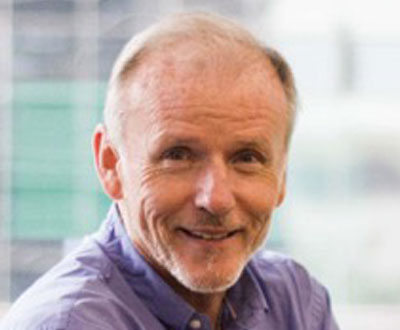
Adam Lyle
SINGAPORE
Adam brings a career in management consulting, training, and change management with a passion for sustainable business. He has worked with the public and private sectors to challenge and stimulate the way they approach innovation in the creation and deployment of their products and services.
Adam is the Co-Founder and Executive Chairman of Padang & Co, an innovation catalyst. Padang drives the adoption of open innovation practices in the public and private sectors enhancing organisations innovation capabilities to solve problems and develop new opportunities.
Adam believes that partnerships between corporates and start-ups is the future of work and will drive a new wave of innovation and build a resilient ecosystem. This led Padang to co-architect LEVEL3, a workspace collaboration with Unilever Foundry that supports Singapore’s emerging start-up ecosystem and entrepreneur community to create and connect them to real business opportunities.
He has worked and lived in Asia for the past fifteen years, in Taiwan and Singapore. From Australia, Adam was previously CEO of Ticketek and Strategic Planning Manager for Optus Singtel.

Lilian Ing
SINGAPORE
Lilian Ing is a multi-faceted consultant psychologist, Lilian has extensive international experience in the fields of organisational development, change management and coaching. She is equally skilled in developing individuals, teams or organisations to focus their energy, creativity and performance on achieving their goals.
She draws on her line management experience as a marketer and partner in a management consultancy working with leaders in multi nationals and small and medium sized businesses across a full spectrum of industries. Thriving in making sense of complex, diverse and often messy situations, Lilian helps to intuitively understand and enable people to develop the capabilities and cultures required to excel.
Lilian has two degrees: A BA Hons (Psychology) and an MA (Clinical Psychology). She also holds post-graduate qualifications in marketing, organisational development and executive coaching. She is a life long learner.

Michael Jenkins
SINGAPORE
HR Magazine (UK) named Michael as one of the UK’s Most Influential Thinkers in HR in 2013 and 2016. He is the author of Expert Humans: Critical Leadership Skills for a Disrupted World. Michael graduated from Durham University in Chinese followed by postgraduate studies in Japanese language, politics and economics at Nanzan University, Nagoya, after which he worked for Toyota Motor Corporation. Returning to the UK in 1988, Michael worked at the University of Bath as Director of the Foreign Languages Centre. In 2001, he returned to Asia as Director of INSEAD Executive Education in Singapore and later joined the Center for Creative Leadership Asia Pacific as MD. In 2009 Michael became CEO of the Roffey Park Institute (UK) and in 2018 Michael joined the Human Capital Leadership Institute (Singapore) as CEO. In 2020 Michael joined the FutureWork Forum as a Partner and co-founded Expert Humans Pte Ltd.
UNITED KINGDOM:
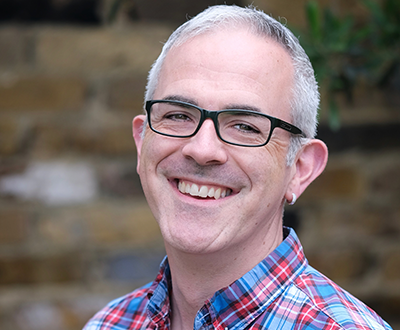
Simon Allison
UNITED KINGDOM
Simon earned his BSc in Food Technology at the University of Reading, and has since that time worked in the food industry for major UK food retailers; Marks & Spencer, Sainsbury's Supermarkets, and Waitrose & Partners as well as Innocent drinks - an entrepreneurial fruit smoothie company, and Pret A Manger - a quick service restaurant chain with outlets on three continents. In this time, his roles have included supplier management, new product development, and innovation. These roles and experiences have each informed a different and generative component to Simon's innovation practice. Simon became a Certified Practitioner of the Six ‘I's® of innovation in January 2020 and worked actively with the Model in his role in Food Technical Innovation at Waitrose & Partners, introducing a new common language of innovation as a result.
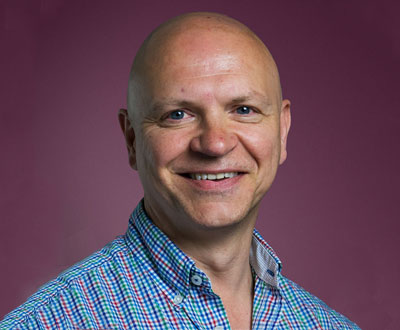
Neil Sykes
UNITED KINGDOM
With over 26 years’ experience as a strategically focused business leader, many spent as a Director, Neil has focused on the initiation, development and implementation of effective strategies to deliver organisational success. He is a natural leader who empowers and guides individuals and organisations to gain a sense of direction, and to look hard at what it is that motivates their success. Neil loves people and how they work; so much so that he embarked on a journey into NLP (Neuro Linguistic Programming); over the years he became a Practitioner of NLP, then a Master Practitioner and Therapist and latterly, an INLPTA trainer of NLP. Seeing as companies are generally filled with humans, being a results-driven empathetic human specialist comes in handy when helping to define company cultures and associated values, in the innovation space. How you innovate will depend on who you are and how you show up. An excellent communicator and presenter with a down to earth style, Neil has a way of cutting through the jargon and smoke screens so that everyone can feel comfortable and included.
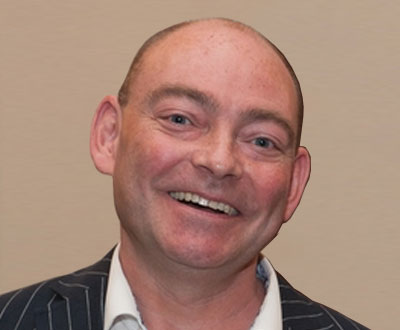
Daniel Wain
UNITED KINGDOM
Daniel Wain was the former Worldwide Director of Learning & Development at Research International (then part of the WPP Group). Since going independent in 2007, he has specialised in learning and development consultancy as well as training and coaching a range of subjects including business, communication and relationship skills. His clients have included most of the global market research agencies, as well as a wide range of smaller consultancies. He has also worked with many client-side insight teams at organisations such as Avon, BBC, BT, Capita, Debenhams, Hewlett-Packard, PwC, Telia Sonera, Tesco Bank, Utility Warehouse and Waitrose, as well as with industry bodies such as the global insight organisation ESOMAR and the Market Research Society (MRS). Daniel holds a Masters in Human Resource Development, and has been a Fellow or Visiting Professor at the Universities of Southampton, Westminster and Winchester in the UK, as well as the IE Business School in Madrid. Daniel is also a regular contributor to a variety of business and academic journals, a published playwright and an award-winning conference speaker and actor!

Harvey Wade
UNITED KINGDOM
Harvey Wade is an experienced transformative leader who drives business impact from innovation and change programs. With over 15 years’ experience in formal innovation roles, he knows what it takes to create, drive and sustain improvement in organisations, changing cultures to increase engagement and buy-in at all levels, enabling better performance and results by understanding their customer needs, desires and wants. Harvey’s innovation journey began at Allianz UK, where he designed, setup and ran the employee innovation program for Allianz UK. Then joining a boutique consultancy as Director of Innovation Strategy, he advised key clients, such as Citi, J&J, AGL, RAC, Westfield Malls, Tesco and Scottish Water, on how to engage their workforce and customers to identify ideas that solved and overcame their key challenges. Harvey moved back into the corporate world, joining Cisco as EMEAR Innovation Lead for the Services Innovation Excellence Center (SIEC) responsible developing and supporting the innovation programs of Cisco to improve customer centricity. Harvey left Cisco to pursue his passion to create innovators everywhere through his organisation Innovate21, based in the UK.

Fiona McClaren
UNITED KINGDOM
Fiona has a passion for working with teams and individuals who want to drive their businesses forward. Her key strengths are marketing – focusing on revenue growth and world class customer relationships, leadership – creating high performance teams that deliver great results and strategy – rapidly understanding a business and creating competitive advantage. Fiona’s start up experience and support of a number of SMEs, included setting up an interactive digital publishing business and developing a European Market Entry strategy for a Hong Kong based LED lighting manufacturer, gives her a pragmatic approach towards the challenges businesses face. She also brings a strong foundation from the corporate world as former Head of UK Marketing for British Telecom’s Ignite Content Hosting Division and leading the development of the companies’ Consumer’s marketing plan, targeting over 20 propositions to 15 million customers. As well as extensive experience in the telecommunications industry, she has over 10 years’ working experience with other major blue-chip brands including Lufthansa and British Airways.

Tim Sharpe
UNITED KINGDOM
Tim is a designer, creative thinker, team leader and innovation inciter with professional experience spanning 3 decades, across 3 continents, on projects within 12 industry sectors, for 57 brands… and counting. Following 18 years in consultancy and 5 years in-house, Tim co-foundered of Better Normal, a creative strategy consultancy focused on understanding people’s needs, frustrations and aspirations to discover and deliver better solutions to problems worth solving. Throughout his career, Tim has championed user-centred design and innovation as essential elements of a successful growth strategy. By demonstrating that a customer-centric approach can ultimately drive profit, Tim has helped transform and grow organisations of all sizes, from start-ups to multinationals, with products and services as diverse as toothbrushes to transportation. Notable brands Tim has worked with include Samsung, TAG Heuer, HP, Speedo, Hitachi Rail, GSK, Kohler and Elekta.

Shivanee Brigham
UNITED KINGDOM
Shivanee has over 15 years’ experience of turning complex ideas into narratives to influence behaviours, action and change. Shivanee has a particular interest in social innovation, innovation leadership and communications, drawing upon her Strategic Communications experience. She has worked on innovation and change programs across sectors; including Security and Defence, Government, Media and Telecoms, Aviation & Tourism; Healthcare; as well as and technology start-ups. She has advised Political Leaders, CEOs, and senior leadership teams in large, complex organisations on public policy, external relations and employee engagement. Shivanee is passionate about global affairs and bringing innovation and change into the local community. Shivanee holds a Masters in Innovation, Creativity and Leadership from Cass Business School, University of London; and a BA (Hons) International Relations & Security Studies, Department of Peace Studies, University of Bradford. As a global thinker, Shivanee believes that people and dialogue drive innovation.
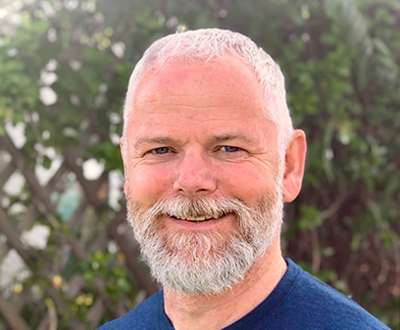
Charlie Tuxworth
UNITED KINGDOM
Charlie is an experienced Business Leader with expertise in Innovation, Leadership, Enterprise Software, and Business Development. In 2013 Charlie took on group-wide responsibility for Innovation in a UK Financial Services company where he designed and implemented an enterprise innovation programme, driving internal and external innovation challenges which resulted in the commercialisation of a range of new products & services. Charlie is a regular writer, presenter, and university guest lecturer on the topics of innovation, ideation, and creativity. He supports a wide range of businesses that want to challenge the way they operate; and delivers innovation & creativity programmes on behalf of CSIT, QUB, UU, Catalyst, the UK government's Digital Catapult, and Cyber 101. As a member of the National Standards Authority of Ireland (NSAI), Charlie wrote the introduction to ISO56002:2019 on behalf of UNIDO and ISO and is now part of the global team writing ISO56001, which will become the de facto certifiable standard for Innovation Management Systems. In 2020 Charlie created Innovate Island – a collaborative network that provides support and best practice guidance to Innovation practitioners across the island of Ireland. Charlie works with organisations of all sizes to align their innovation activities to their business goals and ensures the teams assigned to deliver innovation have the skills, capability, and confidence to do what is asked of them.
EUROPE:

Anca Minculescu
FRANCE
With strong people and change management experience, Anca focuses on leading and building agile teams to achieve performance through transformation. With over twenty-five years corporate and multinational experience at Cisco Systems and The European Commission, and a deep knowledge in a range of new technologies, Anca is well equipped to help organisations navigate the evolving digital landscape. Her experience spans several sectors, from larger companies like Shell, Total, Orange, BNP-Paribas, Axa, and Amadeus to small and medium sized businesses like Lambda-Plus and Docosen, where helping organisations to manage the evolution and integration of new technologies was part of her main expertise. In parallel, Anca is part of several Academic Institutions and Business Schools in France where she builds Digital, Business and Personal Skills in an applied way, helping students to learn how to deal with uncertainty and make the right business or technological choices that will help to create and build value. An advocate of Clean Technologies, Anca is also an honorary member of CCSISEO (The European Cluster for Research Studies in Innovation) and an Associate of Skills of the Future Academy. She is also part of several French and European Think Tanks that focus on the intersection between Innovation, Digitalization and Technology and continues to raise skills standards as an Educational VP for Toastmasters Annecy and energy optimization as President of the Regional Proximity Data Center in Haute-Savoie.

Katarina Önell
SWEDEN
Katarina is a globally experienced change leader, facilitator and coach who specialises in building innovative, and inclusive corporate cultures with a focus on leadership development. With more than 20 years’ experience in helping organisations grow high-performing sustainable businesses, across continents, diverse cultures and business sectors, her experience ranges from large global organizations and SME’s across the private & public sector. Katarina's work has brought deep insights and best practices into how to create engagement and belonging in companies, a commitment to customers and bringing values to life so that they are relevant and alive for employees. Katarina is an active business consultant at Kantar, previously responsible for the People & Culture competence centre in the Nordics. She has been the President of the Diversity Charter of Sweden involved in the European Commission working for a more inclusive work life in Europe and holds a BA in organisational theory and entrepreneurship. Katarina is Scandinavia's first Certified 6`I’s® of Innovation Practitioner and is also a PROSCI change leader, 360 feedback, licenced by FARAX, and an ACC coach.

Mathias Axelsson
SWEDEN
Mathias specialises in organisational research and consulting, bringing clients data, tools and insights that enable greater contribution to business goals and growth. He is highly passionate about creating value-adding solutions that make a difference – co-creation and innovation are natural ingredients in his work with clients. Mathias has a record of more than 17 years in the research and insights industry, as a business owner as well as in Kantar, where he joined in 2008. He has vast experience of change management, business and cultural transformation projects in international settings. In his partnership with clients, Mathias is often responsible for designing strategic models, survey programs and trainings connected to executing and supporting the business strategy, with extensive experience of facilitating workshops on executive levels as well as in the HR environment in international businesses. Mathias holds an MSc in Business Administration, specialisation in corporate strategy and organisational theory. With a base in Stockholm, he has substantial experience in the Nordic, European and Asian markets, having worked with and served clients in more than 25 countries.

Michael Gold
PORTUGAL
Michael is a passionate facilitator, coach and trainer, with particular expertise in how cultures of creativity develop within organisations. He has experience working across corporate, public and not-for-profit companies in a variety of industry sectors and is experienced in working with behavioural and mindset change within groups.
A natural influencer, Michael engages others with passion and enthusiasm, while encouraging lateral thinking and big picture strategic perspectives. He has degrees in Law and an MA in Integrative Psychotherapy and has a background as a clinical psychotherapist.
USA:

Denise Morris Kipnis
USA
Denise is an organisational development consultant known for organizational puzzle-solving and big-picture thinking. Her areas of expertise include organization design, change management, inclusion, communication, and project management. Denise has led change projects across various sectors and countries; her clients include multinationals such as Credit Suisse and BHP Billiton as well as SME’s, non-profits, and government agencies. Denise facilitates change from all sides, not just the top, using cross-functional teams and other whole systems methods to give voice to unusual suspects and disrupt unhealthy power dynamics and biases that are still so prevalent in organizations. Her core competencies lie in uncovering gaps between strategic intention, culture, and system design; enrolling all levels of the organization in problem solving; and facilitating team and cross-department collaboration. Denise has a MSc in Organization Development from Pepperdine University, a B.A. in English from Stanford University, and project management certification from the U.C. Berkeley Extension.
INSIGHTS to ACTION
The Six ‘I’s® for Leadership and Team Development

The 6 'I's® is a brand of The Entheo Network. Registered Address 75, High Street, Singapore, 179435. Company No: 201016398E



















